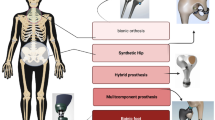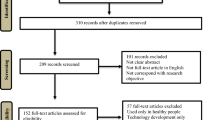Abstract
This study designs a training system for hand rehabilitation on the basis of augmented reality technology, which enables patients to simultaneously interact with real and virtual environments. The system framework is introduced, and four rehabilitation programs, namely, trajectory training, shelf training, batting training, and spile training, are presented. As a requirement of hand rehabilitation training, a color marker that is suitable for hand rehabilitation training is adopted. Following the Hamming coding principle, this marker is designed as a 7 × 7 square that is filled up by four designated colors with a binary bit of “0” or “1”. The check code in each row of the color marker is applied to restore the occluded binary bits, solve the occlusion issue of color markers, and complete the tracking registration of the color markers. The effectiveness of the developed system is evaluated via a usability study and questionnaires. The evaluation provides positive results. Therefore, the developed system has potential as an effective rehabilitation system for upper limb impairment.
















Similar content being viewed by others
References
Alamri A, Cha J, Saddik AE (2010) AR-REHAB: an augmented reality framework for poststroke-patient rehabilitation. IEEE Trans Instrum Meas 59(10):2554–2563
Alamri A, Heung-Nam K, Saddik AE (2010) A decision model of stroke patient rehabilitation with augmented reality-based games. Proc Int Conf Autonomous Intell Syst, 1–6
Aung YM, Al-Jumaily A (2011) Rehabilitation exercise with real-time muscle simulation based EMG and AR. Proc Int Conf Hybrid Intell Syst, 641–646
Aung YM, Al-Jumaily A (2012) AR based upper limb rehabilitation system. Proc IEEE RAS EMBS Int Conf Biomed Robot Biomechatron, 213–218
Aung YM, Al-Jumaily A, Anam K (2014) A novel upper limb rehabilitation system with self-driven virtual arm illusion. Proc Int Conf IEEE Eng Med Biol Soc, 3614–3617
Burke JW, McNeill MDJ, Charles DK, Morrow PJ (2010) Augmented reality games for upper-limb stroke rehabilitation. Proc IEEE Int Conf Games Virtual Worlds Serious Appl, 75–78
Carbonaro N, Mura GD, Lorussi F et al (2014) Exploiting wearable goniometer technology for motion sensing gloves. IEEE J Biomed Health Inform 18(6):1788–1795
Choi Y (2011) Ubi-REHAB: an android-based portable augmented reality stroke rehabilitation system using the eGlove for multiple participants. Proc IEEE Int Conf Virtual Rehab (ICVR), 1–2
Collins J, Hoermann S, Regenbrecht H (2014) Virtualising the nine hole peg test of finger dexterity. Proc 10th Int Conf Disability, Virtual Reality Assoc Technol, 181–188
Cramer SC, Sur M, Dobkin BH et al (2011) Harnessing neuroplasticity for clinical applications. Brain 134(6):1591–1609
Hoermann S, Hale L, Winser SJ, Regenbrecht H (2012) Augmented reflection technology for stroke rehabilitation–A clinical feasibility study. Proc Int Conf Disability, Virtual Reality Assoc Technol, 1–9
Holden MK (2005) Virtual environments for motor rehabilitation: review. Cyberpsychol Behav 8(3):187–211
Hondor HM, Khademi M, Dodakian L, Cramer SC, Lopes CV (2013) A spatial augmented reality rehab system for post-stroke hand rehabilitation. Stud Health Technol Inform 184:279–285
Langhorne P, Coupar F, Pollock A (2009) Motor recovery after stroke: a systematic review. Lancet Neurol 8(8):741–754
Luo X, Kenyon RV, Kline T, Waldinger HC, Kamper DG (2005) An augmented reality training environment for post-stroke finger extension rehabilitation. Proc IEEE 9th Int Conf Rehab Robot, 329–332
Luo X, Kline T, Fischer H et al (2005) Integration of augmented reality and assistive devices for post-stroke hand opening rehabilitation. Proc IEEE Int Conf Eng Med Biol Soc 7:6855–6858
Mathiowetz V, Weber K, Kashman N, Volland G (1985) Adult norms for the nine hole peg test of finger dexterity. OTJR 5(1):24–38
Ong SK, Shen Y, Zhang J, Nee AYC (2011) Augmented reality in assistive technology and rehabilitation engineering. In: Furht B (ed) Handbook of Augmented Reality. Springer, New York, pp 603–630
Pons TP, Garraghty PE, Ommaya AK et al (1991) Massive cortical reorgazation after sensory deafferentation in adult macaques. Science 252:1857–1860
Regenbrecht H, McGregor G, Ott C, Mueller L, Franz E (2014) Manipulating the experience of reality for rehabilitation applications. Proc IEEE 102(102):170–184
Regenbrecht H, McGregor G, Ott C, Hoermann S (2011) Out of reach? a novel AR interface approach for motor rehabilitation. Proc IEEE Int Symp Mixed Augmented Reality (ISMAR), 219–228
Shen Y, Ong SK, Nee AYC (2009) Hand rehabilitation based on augmented reality. Proc ACM 3rd Int Convention Rehab Eng Assistive Technol, 1–4
Sucar LE, Leder RS, Reinkensmeyer D, Hernandez J, Azcarate G (2008) Gesture therapy: a low-cost vision-based system for rehabilitation after stroke. Proc AMC 1st Int Conf Health Inform, 107–111
Takeuchi N, Izumi SI (2013) Rehabilitation with poststroke motor recovery: a review with a focus on neural plasticity. Stroke Res Treatment 2013
Zhang D, Shen Y, Ong SK, Nee AYC (2010) An affordable augmented reality based rehabilitation system for hand motions. Proc IEEE Int Conf Cyberworlds 7(8):346–353
Zhou JM, Huang JW, Lao J et al (2012) The clinical utility of hand function rehabilitation science. Shanghai World Book Publishing Company, Shanghai, pp 8–14
Acknowledgments
This work was supported by the National Natural Science Foundation of China (No. 61203316, 61203319, 61502240), the Natural Science Foundation of Jiangsu Province (BK20141002), Jiangsu Government Scholarship for Overseas Studies, and the Jiangsu Students’ Project for Innovation and Entrepreneurship Training Program (No. 201510300090).
Author information
Authors and Affiliations
Corresponding author
Appendix A
Appendix A
The scoring rules and scoring items in the questionnaire are as follows:
Scoring Rules: Every subject needs to score once he /she completed the test (0–10 points). The full mark is 10 points. The average score and standard deviation for each item are obtained at the end of all tests.
Scoring Items:
I1. Easy to understand
I2. Clear instructions
I3. Enjoyable
I4. AR environment
I5. Interaction
I6. Operability
I7. Motivating
I8. Portable
Rights and permissions
About this article
Cite this article
Liu, J., Mei, J., Zhang, X. et al. Augmented reality-based training system for hand rehabilitation. Multimed Tools Appl 76, 14847–14867 (2017). https://doi.org/10.1007/s11042-016-4067-x
Received:
Revised:
Accepted:
Published:
Issue Date:
DOI: https://doi.org/10.1007/s11042-016-4067-x




